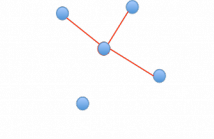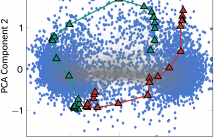
ICASSP is the world’s largest and most comprehensive technical conference focused on signal processing and its applications. The 2019 conference will feature world-class presentations by internationally renowned speakers, cutting-edge session topics and provide a fantastic opportunity to network with like-minded professionals from around the world. Visit website.

In this work, we jointly exploit tools from graph signal processing and control theory to drive a bandlimited graph signal that is being diffused on a random time-varying graph from a subset of nodes. As our main contribution, we rely only on the statistics of the graph to introduce the concept of controllability in the mean, and therefore drive the signal on the expected graph to a desired state.
- Categories:
 38 Views
38 Views
- Categories:
 5 Views
5 Views
- Read more about Deep Residual Learning for Model-Based Iterative CT Reconstruction using Plug-and-Play Framework
- Log in to post comments
Model-Based Iterative Reconstruction (MBIR) has shown promising results in clinical studies as they allow significant
- Categories:
 28 Views
28 Views
- Read more about Deep attractor networks for speaker re-identification and blind source separation
- Log in to post comments
Deep Clustering (DC) and Deep Attractor Networks (DANs) are a data-driven way to monaural blind source separation.
Both approaches provide astonishing single channel performance but have not yet been generalized to block-online processing.
When separating speech in a continuous stream with a block-online algorithm, it needs to be determined in each block which of the output streams belongs to whom.
In this contribution we solve this block permutation problem by introducing an additional speaker identification embedding to the DAN model structure.
- Categories:
 27 Views
27 Views
- Read more about AN OPEN-SOURCE SPEAKER GENDER DETECTION FRAMEWORK FOR MONITORING GENDER EQUALITY
- Log in to post comments
This paper presents an approach based on acoustic analysis to describe gender equality in French audiovisual streams, through the estimation of male and female speaking time. Gender detection systems based on Gaussian Mixture Models, i-vectors and Convolutional Neural Networks (CNN) were trained using an internal database of 2,284 French speakers and evaluated using REPERE challenge corpus. The CNN system obtained the best performance with a frame-level gender detection F-measure of 96.52 and a hourly women speaking time percentage error bellow 0.6%.
icasspPoster.pdf
- Categories:
 67 Views
67 Views
- Read more about Unsupervised Domain Adaptation for Gender-Aware PLDA Mixture Models
- Log in to post comments
- Categories:
 15 Views
15 Views
Predicting the geographical location of users on social networks like Twitter is an active research topic with plenty of methods proposed so far. Most of the existing work follows either a content-based or a network-based approach. The former is based on user-generated content while the latter exploits the structure of the network of users. In this paper, we propose a more generic approach, which incorporates not only both content-based and network-based features, but also other available information into a unified model.
- Categories:
 16 Views
16 Views
- Read more about MULTICHANNEL SPEECH SEPARATION WITH RECURRENT NEURAL NETWORKS FROM HIGH-ORDER AMBISONICS RECORDINGS
- Log in to post comments
We present a source separation system for high-order ambisonics (HOA) contents. We derive a multichannel spatial filter from a mask estimated by a long short-term memory (LSTM) recurrent neural network. We combine one channel of the mixture with the outputs of basic HOA beamformers as inputs to the LSTM, assuming that we know the directions of arrival of the directional sources. In our experiments, the speech of interest can be corrupted either by diffuse noise or by an equally loud competing speaker.
perotin.pdf
- Categories:
 20 Views
20 Views
- Read more about DEEP LEARNING FOR FRAME ERROR PROBABILITY PREDICTION IN BICM-OFDM SYSTEMS
- Log in to post comments
In the context of wireless communications, we propose a deep learning approach to learn the mapping from the instantaneous state of a frequency selective fading channel to the corresponding frame error probability (FEP) for an arbitrary set of transmission parameters. We propose an abstract model of a bit interleaved coded modulation (BICM) orthogonal frequency division multiplexing (OFDM) link chain and show that the maximum likelihood (ML) estimator of the model parameters estimates the true FEP distribution.
- Categories:
 10 Views
10 Views
- Read more about PERFORMANCE OF INTERLEAVED TRAINING FOR SINGLE-USER HYBRID MASSIVE ANTENNA DOWNLINK
- Log in to post comments
In this paper, we study the beam-based training design for the single-user (SU) hybrid massive antenna system based on outage probability performance. First, an interleaved training design is proposed where the feedback is concatenated with the training procedure to monitor the training status and to have the training length adaptive to the channel realization. Then, the average training length and outage probability are derived for the proposed interleaved training and SU transmission.
- Categories:
 15 Views
15 Views